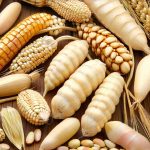The intricate relationship between our gut microbiome and overall health is rapidly gaining recognition. For years, we’ve understood digestion as simply breaking down food for energy, but it’s now clear that the trillions of bacteria residing in our digestive tract play a crucial role in everything from immunity and mental wellbeing to nutrient absorption and chronic disease prevention. A flourishing gut ecosystem isn’t about eliminating bacteria – it’s about cultivating diversity, fostering a balanced community where beneficial microbes thrive. This means focusing on dietary choices that nourish these tiny powerhouses, moving beyond restrictive diets toward a holistic approach that prioritizes whole, unprocessed foods and embraces the power of fermentation.
Many modern lifestyle factors—stress, antibiotic use, processed food consumption—can disrupt this delicate balance, leading to what’s often referred to as “gut dysbiosis.” Symptoms can manifest in a myriad of ways, from bloating and digestive discomfort to fatigue, skin problems, and even mood swings. Fortunately, dietary interventions are one of the most effective tools we have for restoring gut health. This isn’t about quick fixes or fad diets; it’s about building sustainable habits that support long-term wellbeing through conscious food choices that prioritize both fermented foods and fiber-rich sources. A strategic meal plan can be a powerful ally in this journey, allowing us to proactively nurture our inner ecosystem.
Building Blocks of Gut Health: Fiber & Fermentation
Fiber is the indigestible part of plant foods, and it’s essentially the food source for our beneficial gut bacteria. When we consume fiber, it travels through the digestive system relatively intact until it reaches the colon, where it’s fermented by these microbes. This process produces short-chain fatty acids (SCFAs) like butyrate, propionate, and acetate, which have incredible health benefits – reducing inflammation, strengthening the gut lining, improving insulin sensitivity, and even influencing brain function. Different types of fiber feed different bacteria, emphasizing the importance of a varied plant-based diet. Sources include fruits, vegetables, whole grains, legumes, nuts, and seeds. Aim for at least 25-35 grams of fiber per day.
Fermented foods, on the other hand, introduce live beneficial bacteria (probiotics) directly into the gut, helping to populate the microbiome and enhance its diversity. These foods have been traditionally used for centuries in various cultures as a way to preserve food, but we now understand their profound impact on health. Examples include yogurt (with live and active cultures), kefir, sauerkraut, kimchi, kombucha, miso, tempeh, and pickles (fermented in brine, not vinegar). Incorporating even small amounts of fermented foods into your diet can have noticeable benefits.
The synergy between fiber and fermentation is key. Fiber provides the food source for probiotics introduced through fermented foods, allowing them to thrive and flourish within the gut ecosystem. This creates a positive feedback loop, strengthening the microbiome and promoting overall health. It’s not just about taking probiotic supplements – although they can be helpful in certain situations – it’s about cultivating a gut environment where beneficial bacteria naturally want to live. Understanding supporting gut health is crucial for overall wellbeing.
A Sample 7-Day Gut Health Meal Plan
This meal plan focuses on incorporating both fiber-rich foods and fermented options into each day, providing a balanced approach to nurturing your gut microbiome. It’s designed as a starting point, and you can adjust it based on your individual preferences and dietary needs. Portion sizes are suggestions only; listen to your body’s hunger cues.
Day 1:
* Breakfast: Oatmeal with berries (fiber), chopped walnuts, and a dollop of plain yogurt (probiotic).
* Lunch: Salad with mixed greens, grilled chicken or chickpeas, avocado, quinoa, and a side of kimchi.
* Dinner: Salmon baked with roasted sweet potatoes (fiber) and steamed broccoli, served with a small glass of kefir.
Day 2:
* Breakfast: Smoothie made with spinach, banana, almond milk, chia seeds (fiber), and a tablespoon of kombucha.
* Lunch: Lentil soup (fiber) with whole-grain bread.
* Dinner: Stir-fry with tofu, brown rice (fiber), and plenty of vegetables, seasoned with miso paste (fermented).
Day 3:
* Breakfast: Whole-wheat toast with avocado and a side of sauerkraut.
* Lunch: Chicken salad sandwich on whole-grain bread with a side salad.
* Dinner: Shepherd’s pie made with sweet potato topping (fiber) and lean ground turkey, served with a fermented pickle spear.
(Continue this pattern for days 4-7, varying the protein sources, vegetables, and fermented foods to maintain diversity.) Remember to drink plenty of water throughout the day to support digestion and fiber absorption. Implementing a gut boosting routine can set you up for success.
The Power of Prebiotic Foods
Prebiotics are essentially food for probiotics – they’re non-digestible fibers that selectively stimulate the growth and activity of beneficial bacteria in the gut. While probiotic-rich foods introduce live bacteria, prebiotics nourish the ones already residing within your digestive system. This dual approach—probiotics and prebiotics—is often referred to as “synbiotic” nutrition.
Foods rich in prebiotics include:
* Garlic and onions
* Leeks and asparagus
* Bananas (especially slightly green ones)
* Oats
* Apples
* Flaxseeds
* Cocoa
Incorporating these foods into your diet alongside fermented options can significantly boost the effectiveness of gut-healing efforts. For example, adding sliced bananas to your oatmeal or including garlic in your stir-fry not only enhances flavor but also provides valuable prebiotic support for a thriving microbiome. Gradually increase your intake of prebiotic foods to avoid digestive discomfort as your gut adjusts.
Hydration and Gut Health: An Often Overlooked Factor
Adequate hydration is crucial for optimal digestion and gut health. Water helps move food through the digestive system, preventing constipation and supporting the growth of beneficial bacteria. Dehydration can lead to a hardened stool, making it more difficult for microbes to access fiber and reducing their ability to produce SCFAs.
- Aim for at least eight glasses of water per day*, but adjust based on your activity level and climate.
- Consider incorporating herbal teas like ginger or peppermint tea, which can also aid digestion.
- Avoid sugary drinks and excessive caffeine, as these can disrupt gut balance. The impact of cooking frequency on your microbiome is also important to consider.
Mindful Eating & Stress Management
While diet plays a crucial role in gut health, it’s important to remember that stress can significantly impact the microbiome. When we’re stressed, our bodies release cortisol, which can alter gut motility, reduce digestive enzyme production, and even affect the composition of gut bacteria.
- Practice mindful eating: Slow down, savor your food, and pay attention to hunger cues.
- Incorporate stress-reducing activities into your daily routine: Yoga, meditation, deep breathing exercises, or spending time in nature can all help regulate cortisol levels.
- Prioritize sleep: Aim for 7-8 hours of quality sleep each night to allow your body to repair and restore itself. Building a seasonal gut health strategy can help you stay on track year-round.
A holistic approach that combines dietary interventions with stress management techniques is the most effective way to cultivate a healthy gut and unlock its profound benefits for overall wellbeing. Remember, it’s not about perfection—it’s about making sustainable changes that support long-term health and vitality. Also consider supporting your gut with seasonal herbs and roots. Finally, don’t underestimate the benefits of exploring fermented foods.


















